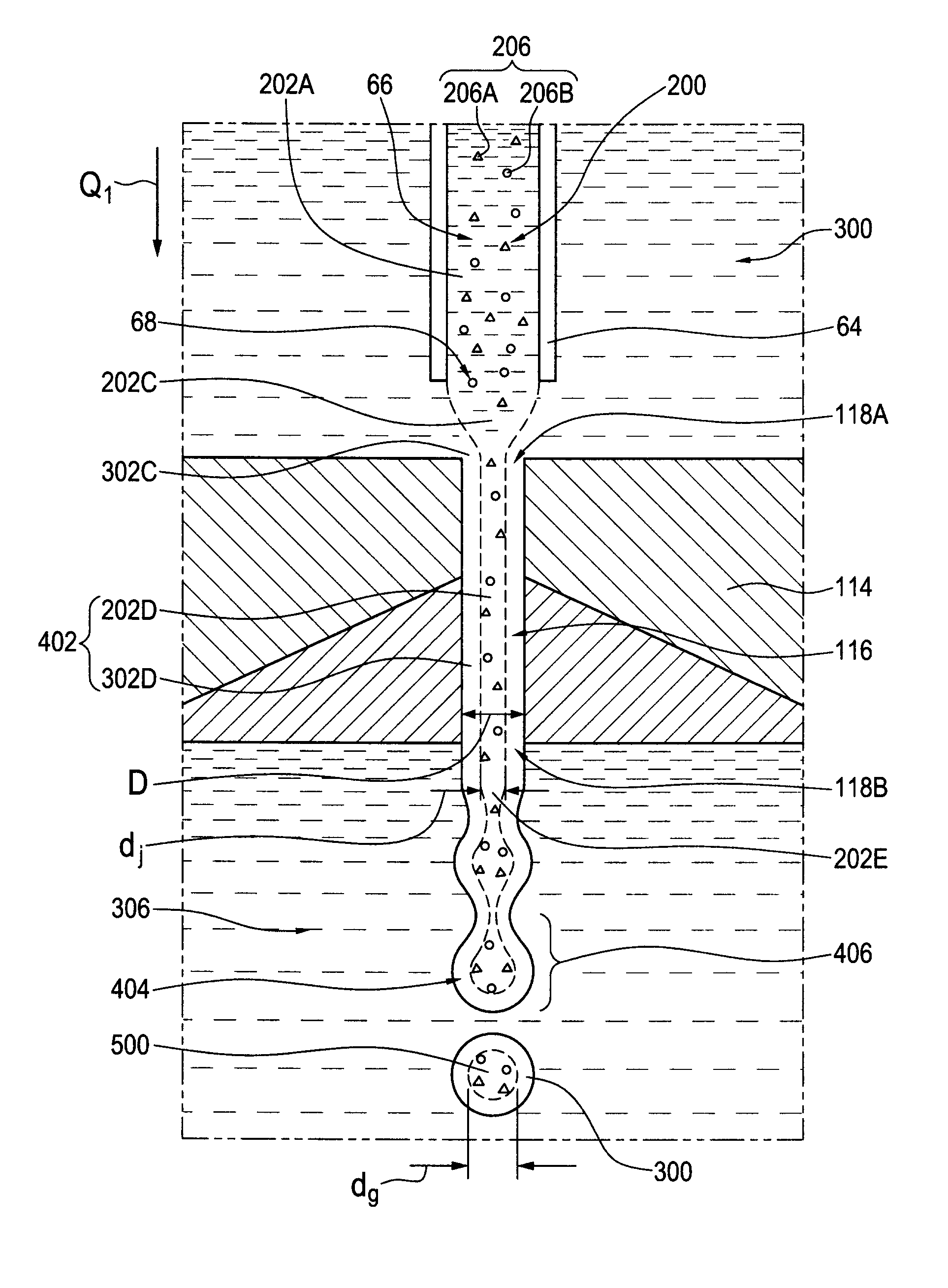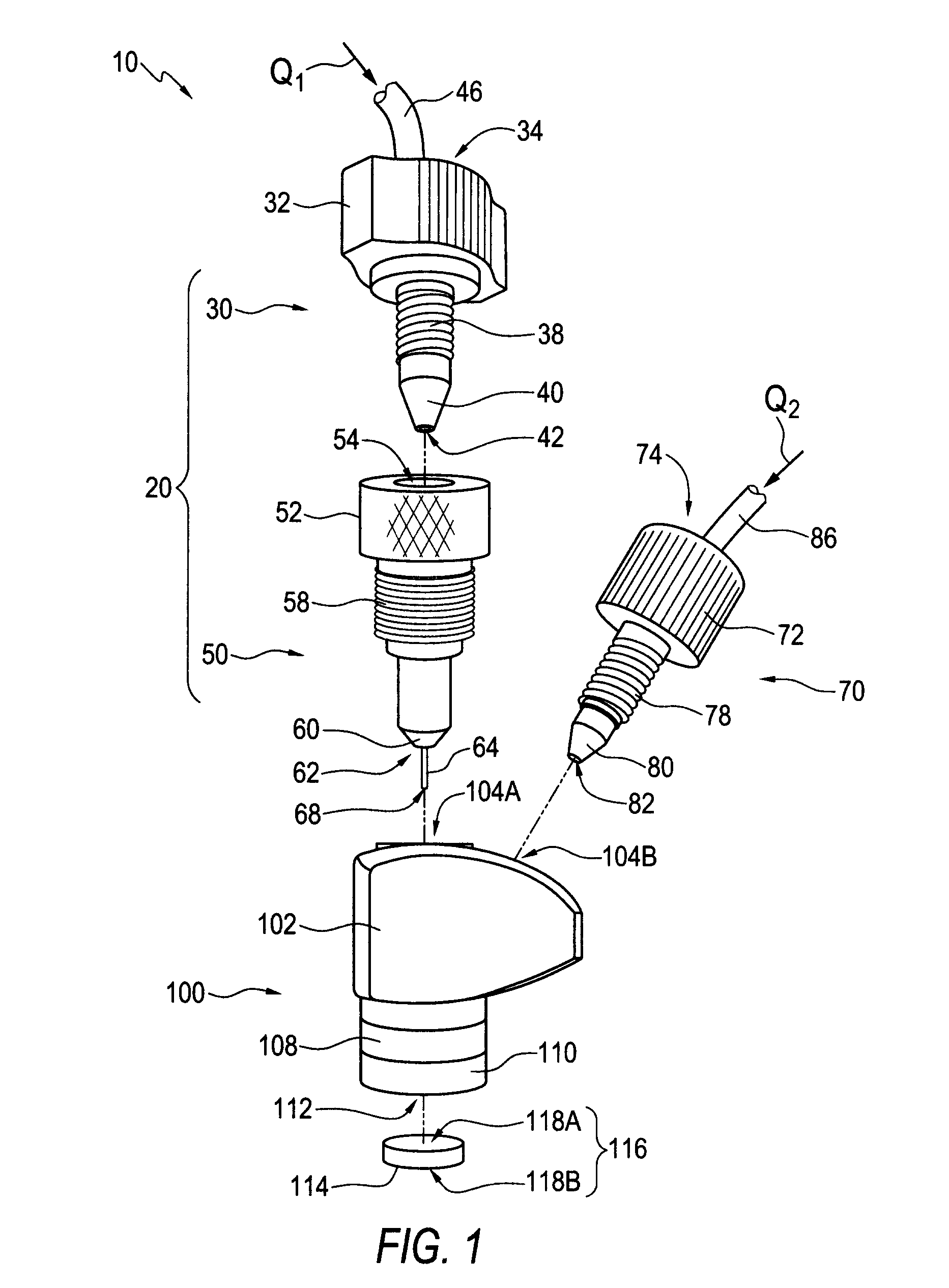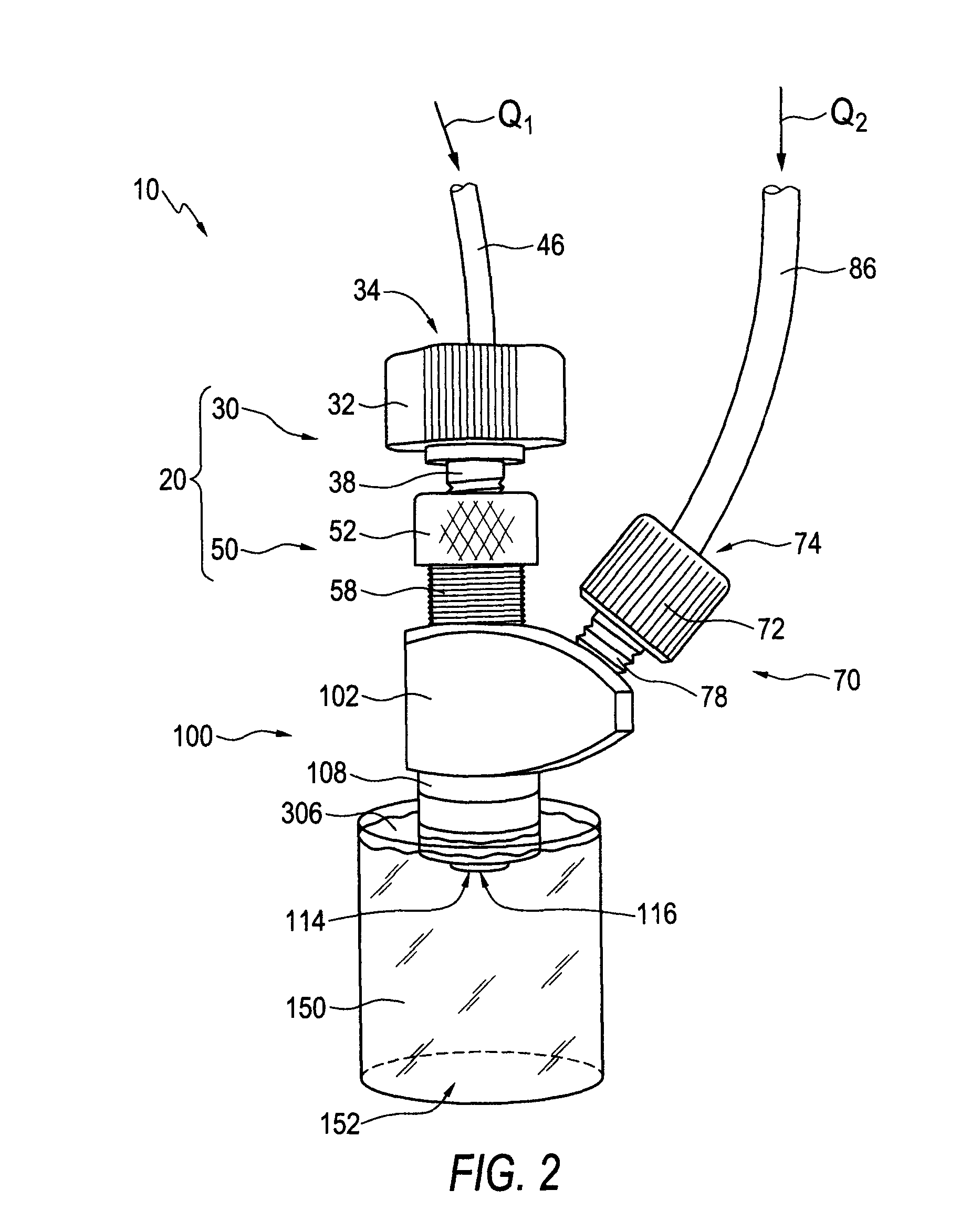Systems and methods for manufacturing quantum dot-doped polymer microbeads
a polymer microbead and quantum dot technology, applied in the field of detection polymer microbeads, can solve the problems of difficult control of qd density inside the beads, difficulty in controlling the qd density of beads, and/or the diffusion of qds out of the polymer matrices, and achieve the effect of reducing the cross-sectional profile of the polymer stream
- Summary
- Abstract
- Description
- Claims
- Application Information
AI Technical Summary
Benefits of technology
Problems solved by technology
Method used
Image
Examples
example 1
[0176]A barcode was designed by mixing QD / chloroform solutions of different colors in appropriate ratios in order to generate the desired barcode emission spectrum of 520 nm, 580 nm and 630 nm with a 1:2:3 ratio. Into the chloroform mixture, commercial poly(styrene-co-maleic anhydride), cumene terminated powder (from Aldrich) (or derivatives) was dissolved to create a 4% polymer solution. The resulting solution was then introduced into a commercial nozzle (Avant-1 from Ingeniatrics) using a syringe pump (SP100I from World Precision Instruments) at a rate of 1 mL / h along with water as a focusing fluid using a digital gear pump (Cole Parmer Instrument Company) at a rate of 180 mL / h. During the reaction, the nozzle was immersed into a water solution under stirring. Beads were hardened by overnight stirring and collected by centrifugation.
example 2
[0177]In this example, the following QD-based barcode was used: 555 nm, 580 nm, 605 nm with a respective intensity ratio of 1:2:1. The solution was made using the same protocol as Example 1 using poly(styrene-co-maleic anhydride).
example 3
[0178]The same protocol was used as in Example 1, however, the QDs were replaced by magnetite nanoparticles (from Ferrotec Corporation) dissolved into chloroform. This example resulted in paramagnetic microbeads that are attracted to a magnet and lose their magnetism upon removal of the magnetic field.
PUM
| Property | Measurement | Unit |
|---|---|---|
| diameter | aaaaa | aaaaa |
| diameter | aaaaa | aaaaa |
| flow rate | aaaaa | aaaaa |
Abstract
Description
Claims
Application Information
 Login to View More
Login to View More - R&D
- Intellectual Property
- Life Sciences
- Materials
- Tech Scout
- Unparalleled Data Quality
- Higher Quality Content
- 60% Fewer Hallucinations
Browse by: Latest US Patents, China's latest patents, Technical Efficacy Thesaurus, Application Domain, Technology Topic, Popular Technical Reports.
© 2025 PatSnap. All rights reserved.Legal|Privacy policy|Modern Slavery Act Transparency Statement|Sitemap|About US| Contact US: help@patsnap.com



